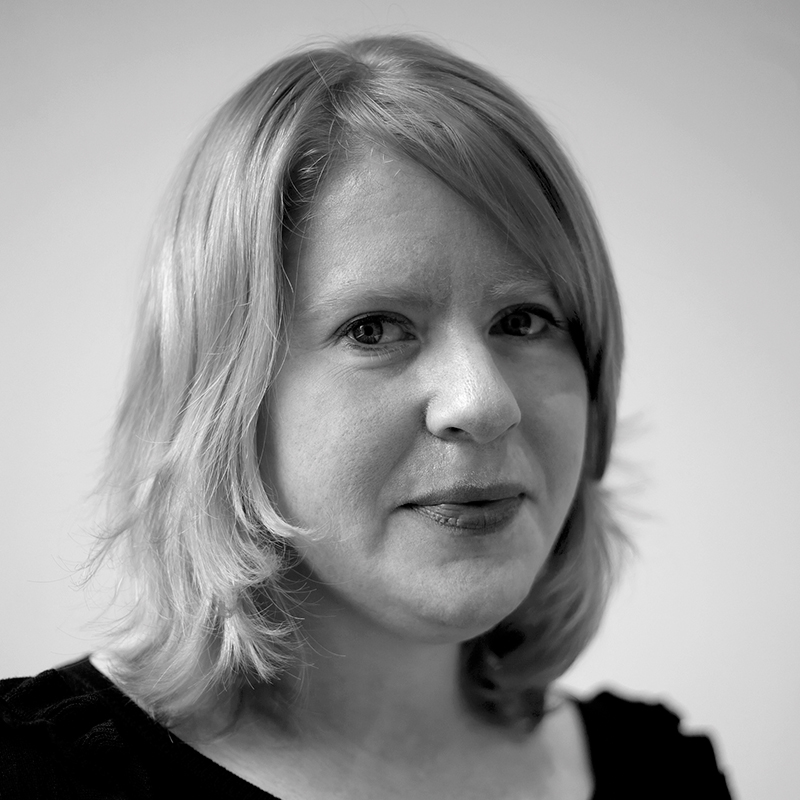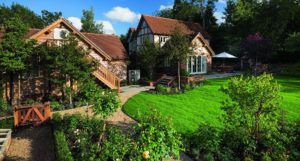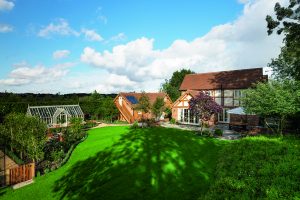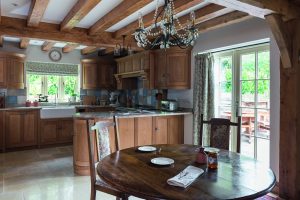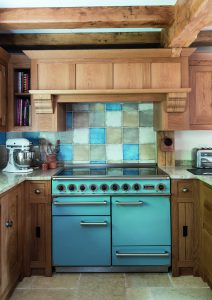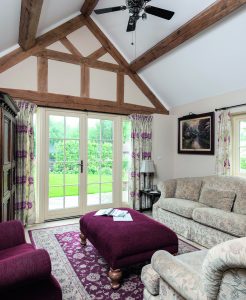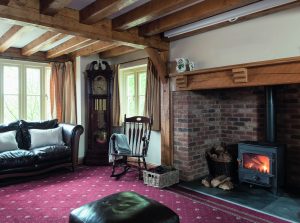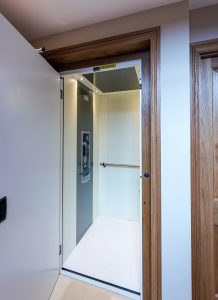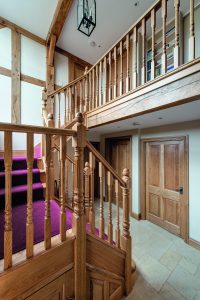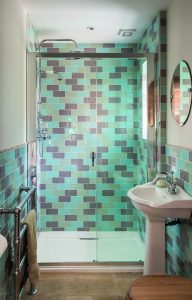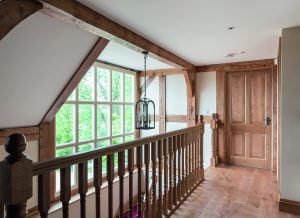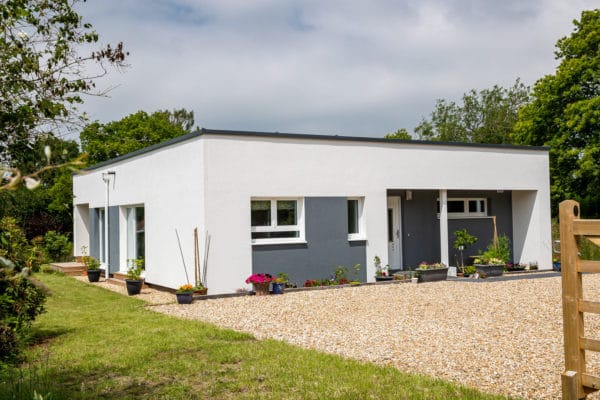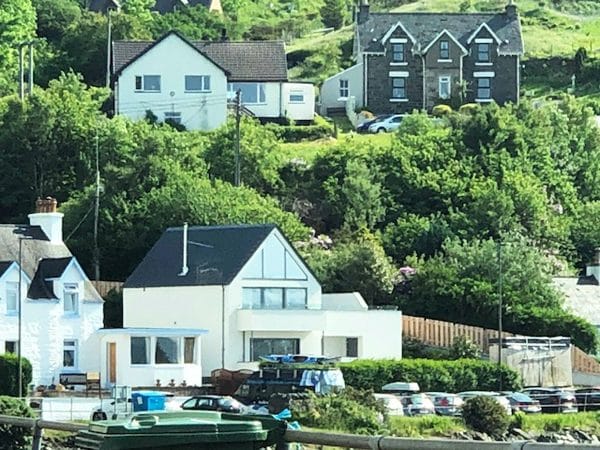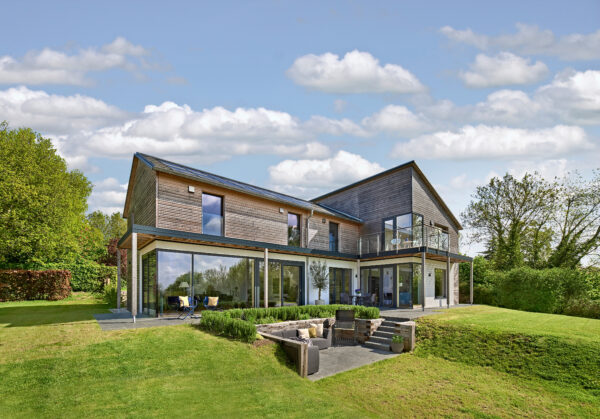Sustainable Oak Frame Home
You might expect someone who grows trees for a living to have a natural affinity with an oak frame building – which is definitely the case for Steve McCurdy. He runs a tree nursery on the edge of a Hertfordshire village, and now lives mere metres from his business.
Step out the back gate, in fact, and you soon find yourself in the shadow of rows and rows of leafy specimens, all for sale. The garden has been beautifully landscaped, of course, but the house is pretty special, too: a Border Oak home that is the perfect complement to such a green setting.
This self-build project wasn’t the first time Steve and his wife Janet had worked with Border Oak. When they initially bought the land for the nursery, they sought planning permission for an oak frame property on site, which they moved into in 2004. At the time, they had three sons at home, so the five-bedroom house was ideal for a family.
- NamesSteve & Janet McCurdy
- LocationNear St Albans, Herts
- ProjectSelf-build
- StyleTraditional
- Construction methodOak frame & structural insulated panels (SIPs)
- Plot costAround £250,000 (part of a larger sale)
- House size283m²
- Build cost£649,000
- Build cost per m²£2,293
- Total cost£899,000
- Construction timeNine months
- Current value£1.2m
When the plot on the other side of the nursery came up for sale in 2012, they were quick to seize the opportunity. “We were ready to downsize, but there was also an issue about the access driveway to the business – it was on a bend at the bottom of a hill, and it was dangerous with lorries going in and out all the time,” says Steve.
Buying the new plot could therefore solve two issues. It would allow them to move the access road a few metres up the hill, away from the bend, and then split off one section for themselves – hopefully getting a new home out of it, too.
Satisfying the planners
They bought the 1.5 acre plot, including a tumbledown cottage, for £870,000. “It was built in 1760 and had been listed, but then it somehow got de-listed in the 1980s, after which the owners added an awful extension on it,” says Steve.
A conservation officer had surveyed the cottage to check that there was nothing of architectural merit worth keeping – but this was only one of the hurdles they faced. “We went to the council and told them our thoughts and aspirations for the plot, and they were fine with changing the residential curtilage,” says Steve.
“But by the time we went for consent, a new planning officer had taken over. She thought the house was too big and wanted it to be exactly the same size as the cottage, not a square metre more. We listened to everything she wanted, made some changes… and got a second refusal.”
Some of the demands seemed to make no sense. The couple felt a clear precedent had been set by the style of their existing oak-framed home not 50m away, but the officer wanted the external beams painted black and the render finished in white, mock-Tudor style. However, the case eventually went to a planning committee, and – thanks in part to the support of the local parish council – the plans were passed.
Building in oak
The couple moved into the cottage and started turning their plans into action. Steve had project managed their first self-build, as well as overseen smaller projects on the nursery site – some of them also by Border Oak – so was happy to be hands-on. Having complete confidence in the company, they didn’t look anywhere else. “They took a very personal approach to our first scheme and we had a good relationship,” says Janet, who has long had a preference for oak frame.
As the plot was on a slope, large parts of it needed to be levelled. Steve oversaw the initial re-grading of the site and the foundations stage – taking the house up to damp proof course (DPC) level before Border Oak stepped in.
The building’s fabric is a mix of structural insulated panels (SIPs) on the ground floor – which took just a week to construct – and oak frame above (which spans across the SIPs and outer brick wall). There’s a garage and annexe adjacent to the house (perfect for housing visitors), plus a potting shed, greenhouse and other outbuildings, all erected as part of the same package of works.
Border Oak’s team was on site for seven months, taking the build to watertight shell stage. Steve then took responsibility for overseeing the rest of the works through to completion, sourcing materials and contracting local trades himself.
A new lifestyle
As Janet and Steve had envisaged, their home is better suited to a couple who entertain friends and grown-up family members than someone bringing up children. “We had a separate dining room in our old house but it felt cut-off from the kitchen, so I wanted a clearer space where you could move around more easily,” says Janet.
Upstairs there are three bedrooms – one of which contains a comprehensive home gym, for which the floor had to be reinforced to take the extra loads of this kind of zone. The master bedroom is open to the eaves to show off the exposed oak beams, but the roof space above the two other bedrooms has been given over to loft storage, which is accessed via a ‘hidden’ sliding door disguised as a bookshelf.
It’s quite a posh loft, carpeted and accessed by a full staircase rather than the usual drop-down ladder, which is all part of the McCurdys’ plan to make sure that this house will accommodate them even if they have limited mobility in the future. They’ve thought of everything, from having easy-to-open drawer handles to the most major intervention of all, a Thyssenkrupp home lift.
Sustainable features
As with many rural projects, there was no gas mains on site. Rather than opt for a stored-fuel solution, such as oil or LPG, the couple instead settled on installing an air source heat pump (ASHP) to provide their hot water and heating.
The unit feeds an underfloor heating (UFH) system across both storeys. Solar thermal panels on the annexe roof supply additional hot water. Other eco measures include a rainwater harvesting tank, which repurposes the run-off from the house and annexe to irrigate the garden.
“I wanted to be green if at all possible, but I had my doubts about it,” says Steve. “The heat pump felt like some kind of voodoo; how can it possibly power my house when it’s -10°C or -15°C outside?”
Persuaded by a member of staff at Border Oak, he installed the system nonetheless and is pleased with the results. “There were a couple of initial hiccups but since then it’s worked flawlessly,” he says.
Then & now
Plenty has changed between the McCurdys’ first experience with self-building and completing their present home. The pair marvel at how much the Building Regs have changed in favour of better energy efficiency – there’s 150mm-thick insulation in both the floors and the roof.
The results fit them perfectly. “A house needs to feel lived in, like it’s been there for a while,” says Janet. “One of the nicest things about self-building is that it immediately feels like home when you move in, because you’ve watched it come up from the ground.”
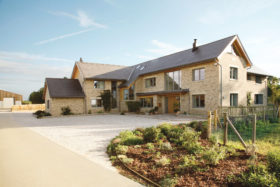
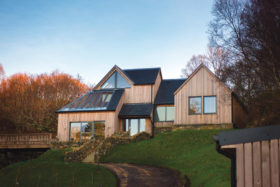






























































































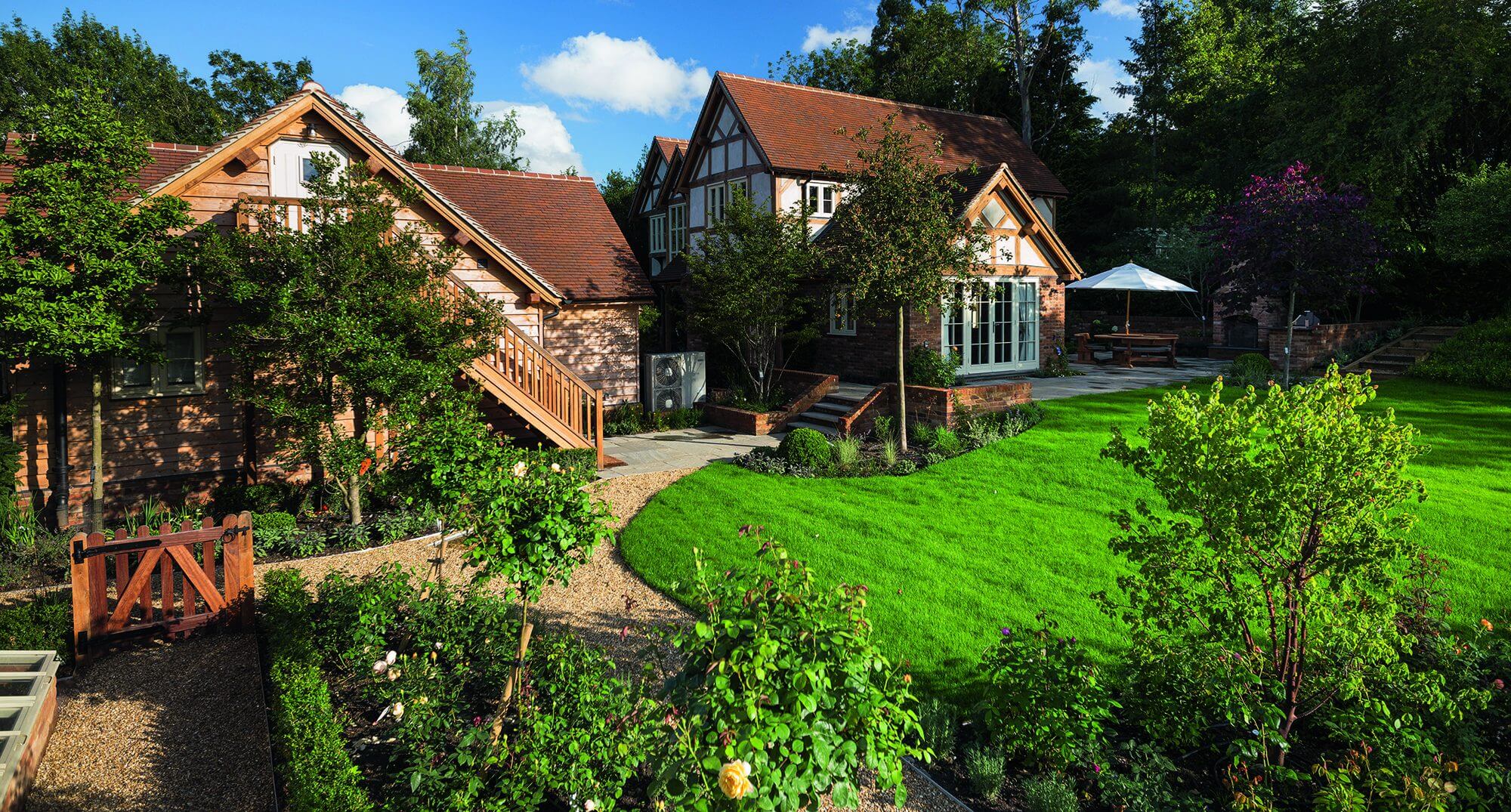
 Login/register to save Article for later
Login/register to save Article for later
